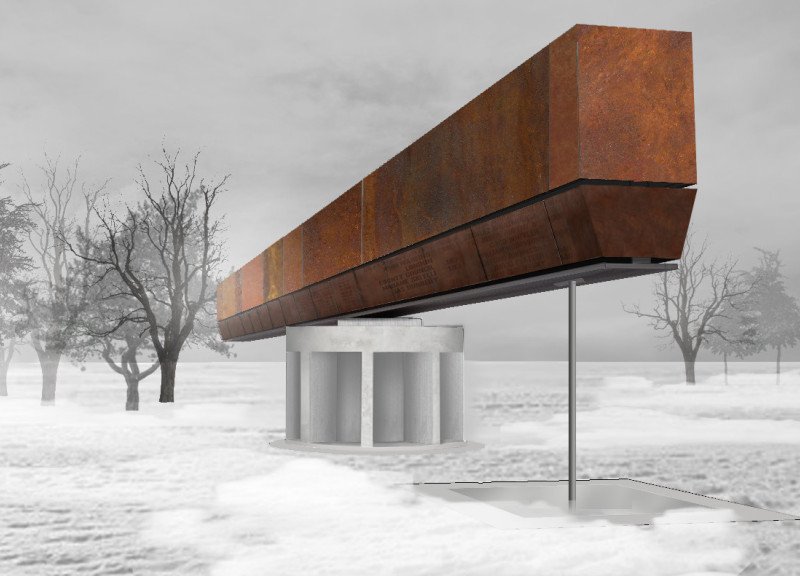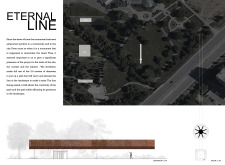5 key facts about this project
The memorial serves as a thoughtful exploration of memory and history within a community. It is designed to commemorate the deceased, reflecting a significant presence that is carefully tuned to the scale of its surroundings. The structure integrates well with the landscape while providing an engaging experience for visitors, inviting them to reflect on the themes it represents.
Elevated Structure
Central to the design is an elevated line that expresses the connection between history and the natural environment. This line is intentionally raised to ensure it remains visible and impactful within the park. It helps maintain the flow of the landscape and pathways. By incorporating the memorial into the existing site, the design emphasizes its presence without disrupting the natural elements around it.
Elements of the Memorial
The memorial consists of two main parts: the beam and the post. The beam, which is elevated and linear, is made from Corten. This material is chosen for its durability and its ability to blend with the surrounding terrain. The post is a solid mass placed at ground level, which has been hollowed out. This contrast highlights themes of permanence and memory. Together, these elements create a balance between height and solidity in the design.
Structural Principles
The structure relies on a cantilever system in which a steel beam is supported by a concrete post. This setup is complemented by a hanger that connects the beam to the foundations in the ground. This method reflects contemporary engineering practices, ensuring stability while also maintaining a sense of visual balance.
Educational Purpose
To fulfill its purpose as a memorial, the structure includes written accounts of significant historical events, particularly genocides. The elevated line serves as a timeline, allowing visitors to visually engage with these tragic moments while promoting awareness. The walls of the post contain historical narratives, enriching visitors’ understanding of the significance of the site as a place for remembrance.
The surface of the memorial, with its weathered texture, invites interaction. As visitors move around the structure, they can observe the changing light and shadows playing across its forms, enhancing the reflective nature of the memorial.






















































